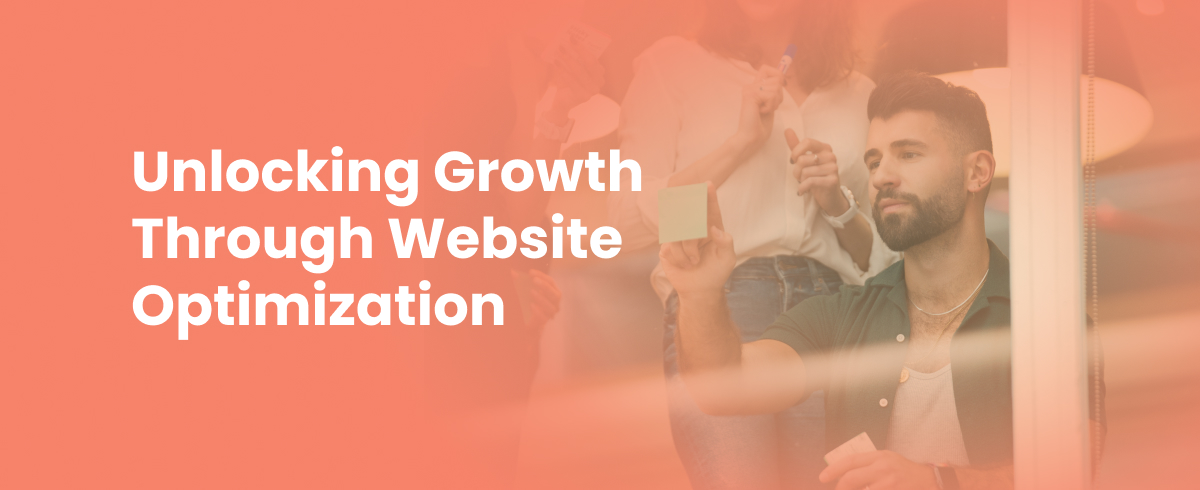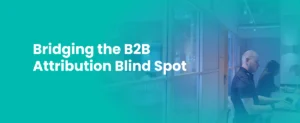The Website is the Blocker: Unlocking Growth Through Website Optimization
Your ads aren’t failing. Your website is.
When enterprise tech clients come to us frustrated with paid media underperformance, it’s rarely the ads or targeting that are at fault. What we see consistently across enterprise-level companies is that poor website optimization is the bottleneck. In complex B2B sales cycles, your site is a trust-builder, an educator, and often the first place a buyer experiences your brand in depth.
“Your ads can only be as effective as the experience they drive traffic to,” explains Michael McCann, Head of Conversion Rate Optimization at Somebody Digital. “We see again and again that the website, not the media, is what stops conversion momentum.”
If high-intent traffic hits friction (confusing navigation, unclear value propositions, slow-loading pages, or forms that feel like an obstacle course), every dollar spent on paid media is wasted. And yet, many marketing teams keep tweaking campaigns externally instead of looking inward. We’ve learned that the real growth lever is often sitting right in front of us.
Why Website Optimization Beats Endless Ad Tweaks
Across our clients, we see the same signals: high bounce rates on critical landing pages, dead clicks, low scroll depth, form abandonment, and low engagement with core resources. What’s often overlooked are the micro-conversions: the smaller indicators of qualified interest like newsletter sign-ups, resource downloads, or meaningful time on pricing or product pages.
These micro-conversions are more than vanity metrics. They reveal who is truly engaged, helping us build high-intent retargeting audiences and uncover qualified leads that would otherwise remain invisible. Ignoring these signals keeps retargeting underdeveloped and funnels leaky, even when paid media campaigns appear to perform well.
“Ad spend can scale results temporarily, but website optimization compounds growth over time,” notes McCann. “When we shift the focus from ad optimization to diagnosing website friction, results follow.”
Diagnosing the Real Bottleneck in Website Conversion
When we worked with one enterprise SaaS client, we shifted the focus from ad optimization to diagnosing website friction. Using Microsoft Clarity, Google Analytics, heatmaps, and our Test What Matters framework, we systematically identified points of friction across the funnel.
Aligning paid media, UX, content, and web development teams, we ran targeted experiments to reduce friction and optimize engagement. Within three months, demo requests increased by 37%, engagement metrics improved, and the relationship between marketing activity and pipeline impact became much clearer. This is what we do every day for clients navigating complex, AI-influenced buyer journeys.
The ROI of Continuous Website Optimization
The “Website is the Blocker” pivot is a strategic realignment. We advise clients to shift KPIs from raw lead volume to qualified engagement and conversion metrics. Budgets should move from constant ad adjustments to CRO specialists, UX testing, and website improvements.
Tracking micro-conversions is critical. Not every click needs to be a demo request. Small indicators like whitepaper downloads, video views, or newsletter sign-ups build retargeting audiences and inform decision-making for the bottom of the funnel. Uniting teams across paid media, content, and web ensures that fixes are holistic rather than piecemeal.
The result is predictable: higher website conversion rates, less wasted spend, increased trust and credibility with buyers, and a website built to serve the modern AI-era B2B tech buyer. What other agencies debate, we’re already building for: a marketing engine that scales across 16 languages and multiple regions while remaining measurable, predictable, and conversion-ready.
“When you shift focus from ad tweaking to user experience, you stop guessing and start compounding results,” concludes McCann. “That’s what real conversion rate optimization looks like.”
High bounce rates, dead clicks, form abandonment, and low engagement are strong indicators.
Smaller actions—newsletter sign-ups, downloads, video views—that show qualified interest.
Measurable uplifts typically appear within 8–12 weeks of targeted CRO interventions.




